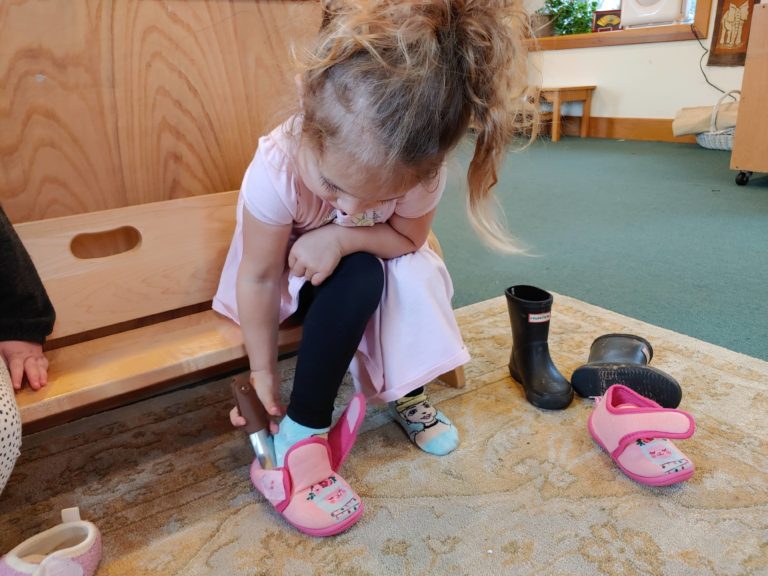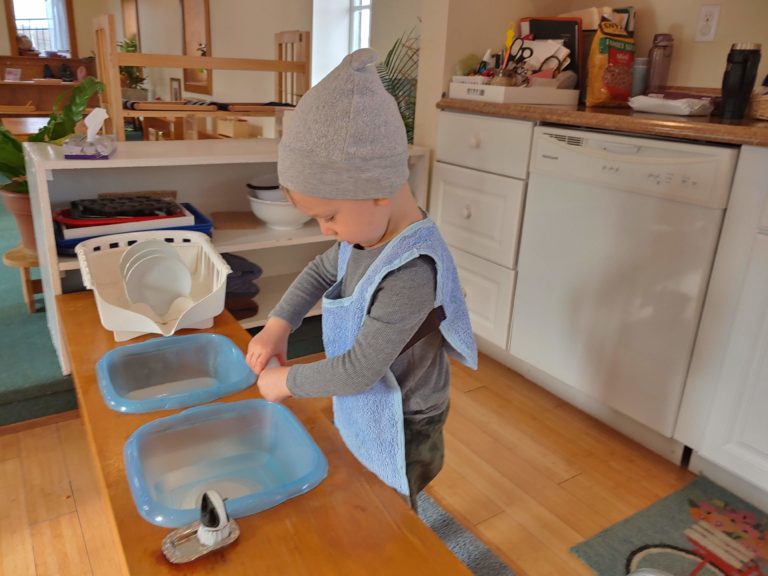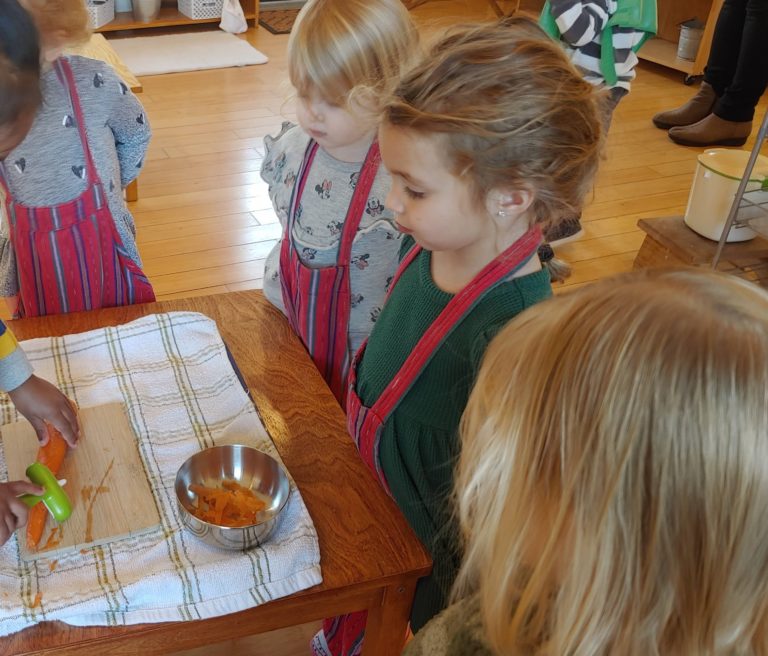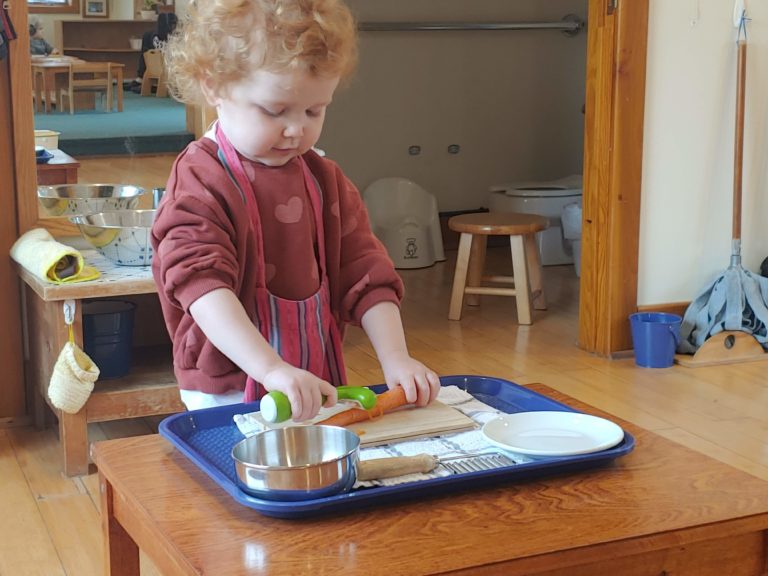
Practical Life is the heart of the Montessori curriculum. The activities in the Practical Life area of the classroom are oftentimes the most beloved by the children. These are activities that they see adults do every day, but may not have the opportunity to do on their own at home. These activities are also where the child first begins to develop concentration, a habit of the work cycle. The ability to follow a logical sequence of steps and other skills that serve as the foundation for extended and sustained periods of focus.
Dr. Maria Montessori said about Practical Life activities, “Sweeping the floors, changing the water in the flower vases, putting the little tables back in order, making the beds, setting the table…all these are rational activities that organize his physical exercise…daily life encourages thought by means of ordinary work.”
Care of the Person
The first area of the Practical Life curriculum is Care of the Person. These exercises help the child develop self-respect, self-reliance, knowledge, confidence, and functional independence skills. Oftentimes, these are functional independence skills that we are sharing with the children. Activities in this area include practice dressing and undressing, taking shoes on and off, handwashing, nose-wiping, dressing frames, toilet learning, and shoe brushing and polishing.
Care of the Environment

The second area of the Practical Life curriculum is Care of the Environment. This is caring for the indoor classroom environment or the outdoor classroom environment. These exercises help the children build respect for the environment and others as they participate in the maintenance and beautification of their classroom. Activities in this area include dishwashing, window washing, mirror polishing, wood polishing, table washing, care of plants, mopping, sweeping, flower arrangement, cloth washing, and setting the table.
Grace and Courtesy Lessons
The third area of the Practical Life curriculum is Grace and Courtesy lessons. Through direct presentations, individually or in small groups, and indirectly through the Guide’s natural interactions in the environment, the children see how it is to behave and interact with others in different social situations. This includes how to carry yourself respectfully, develop social skills, communicate their feelings, practice conflict resolution, observe another child working, roll a work rug, carry a chair, and walk around a rug or work area.
Food Preparation
Another area of the Practical Life curriculum that is very loved by the children is Food Preparation. Toddlers are naturally curious and drawn to food. Through Food Preparation activities, we are showing the children how to care for themselves and giving them the exact skills that they need to be able to serve themselves. These activities include juicing oranges, slicing bananas, self-feeding using utensils, and using a knife and other kitchen utensils.
All Montessori materials and exercises have both a direct and an indirect purpose. A direct purpose is the aim of the activity itself in relation to the child’s development. The indirect aim or purpose seeks to prepare the child for further learning. The direct purpose of Practical Life activities is to learn to independently perform an important life function. The indirect purposes of Practical Life activities are the development of control of the will, self-esteem, sense of belonging in the community, and bringing order, logic, and purpose to the child’s mind and activity.

